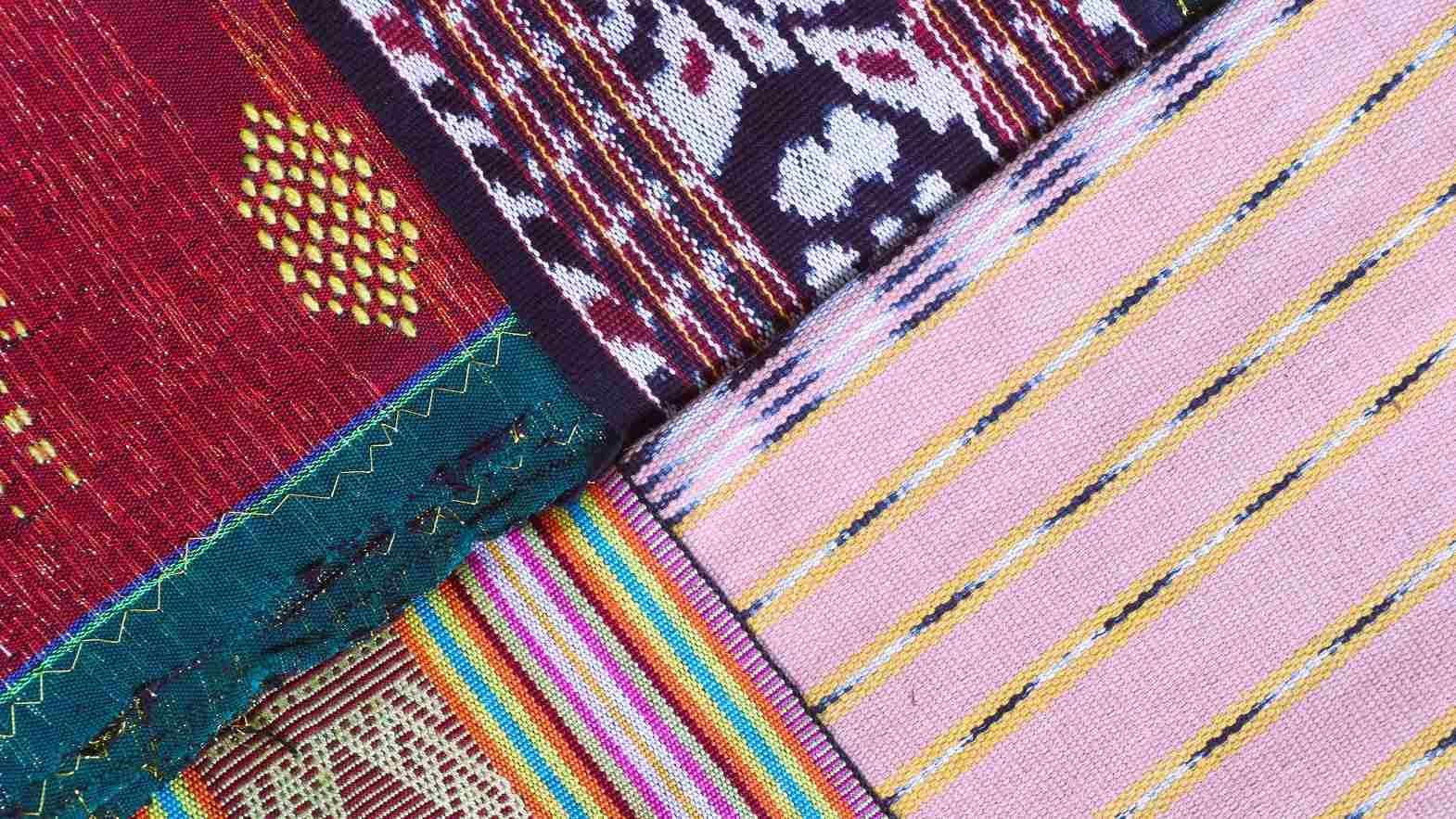The plain weave is very popular because it is the least expensive among all weaving patterns. It can be produced on a loom with two harnesses. It produces the firmest fabric, with the highest number of interlacings compared to other weaves. Plain weave is created by yarns at right angles, where every single warp yarn interlaces with every weft yarn. It is also reversible unless it is part of a surface design. It appears neat and is abrasion-resistant. However, it requires a lot of ironing as it wrinkles more than other weaving patterns. This kind of weaving pattern is mostly used as a background for printing or embroidery. In a plain weave, when heavy yarns are used, it can create a ribbed effect. A rib weave produces fabric with fewer visible yarns on the surface per square centimeter. Plain weave also includes the basket weave. In a basket weave, two or more yarns are treated as one (either in warp or weft) and are interlaced in a plain weave. It creates a contrasting color effect. However, it lacks firmness, has more yarn slippage, and shrinks easily. Basket weave can be seen in wall hangings, pillows, etc.
Twill Weave is also part of simple weave patterns. Unlike plain weave, which requires two harnesses, twill weave requires three harnesses. In twill weave, diagonal lines are formed by floating every single warp and weft yarn across two or more weft or warp yarns. These yarns can be intertwined from left to right or vice versa to form diagonal lines. The direction of the twill that appears on the face of the fabric is opposite to the one on the back. Twill weave is appreciated for its durability and softer feel. It is also flexible and is not prone to too many wrinkles, making it aesthetically pleasing.
Depending on the direction and pattern, Twill weave is further classified into:
- Right Hand Twill, where the diagonals flow upwards to the right.
- Left Hand Twill, where the diagonals ascend to the left.
- Balanced Twill, which is reversible and defined as twill in which the same number of warp passes over filling yarns.
- Unbalanced Twill, with an irregular number of warp passes over filling yarn.
- Broken Twill, which blends right or left-hand twills.
- Herringbone Twill, a pattern inspired by herringbone fish with a sequence of inverted Vs all over the fabric, commonly seen in suit fabrics.
- Reclining twill, woven with smaller angles, and a steep twill, woven with larger angles. Regular twill angles are around 45 degrees and refer to the angles of diagonal lines.
Satin weave is also a part of the plain weave family. In satin weave, one warp yarn is floated over four or more wefts and then tied down with a single thread. This gives the fabric a smooth and lustrous surface. Fabrics like satin, sateen, and charmeuse are woven using the satin weave pattern.
In complex weave patterns, the dobby weave consists of small, geometric designs that are composed of short floats and are created with a blend of two or more basic weaves, using a dobby attachment on the loom. In jacquard weave patterns, mixture of plain, twill, and satin weaves is used. Jacquard weave pattern produces multicolour effect. This type of pattern is expensive, but the design doesn't wear out easily. Brocade, tapaesry and cotton and linen damask are example of jacquard weave. Jacquard weave pattern is applied to come up with some amazing home furnishing, apparel and decorative fabrics. In double cloth weave, three to five sets of yarn are operated. In this two fabrics are woven together on the same loom and mixed jointly with an extra set of warp or weft yarns called binder yarns. This pattern produces a variety of fabrics. It is reversible, stable and can consist of different colours or designs on the two sides. Its application is limited to upholstery and heavy apparels.
Pique weaving pattern is also part of complex weave. It can be anything from light weight to heavy weight cotton fabric with lifted design. It is made on dobby or jacquard loom. There is also pile weave, where additional series of warps or wefts are woven over ground yarns of plain or twill weave to form loops. Pile fabrics can consist of cut or uncut loops.
Velvet, corduroy and velveteen are examples of piles with cut loops and terry is example of uncut pile wherein loops are intact. The surface figure weave is characterised by extra filling yarns that float across the back of the fabric interwoven with the warp yarns to form a particular design. Some other weave patterns are combinations of either the simple weave patterns or complex weave patterns. These patterns include crepe weave, leno weave and triaxial weave.
The smoothness or firmness, design or feel, all depend on the type of weaving pattern that is used during the production of a fabric. The weaving pattern can impart varying properties and pleasing appearance to the cloth. The choice of the pattern depends on the qualities that the manufacturer desires in the final product.
References:
1. Textilebd-fabric.blogspot.in
2. Textileschool.com
3. Textilefabric.com













Comments